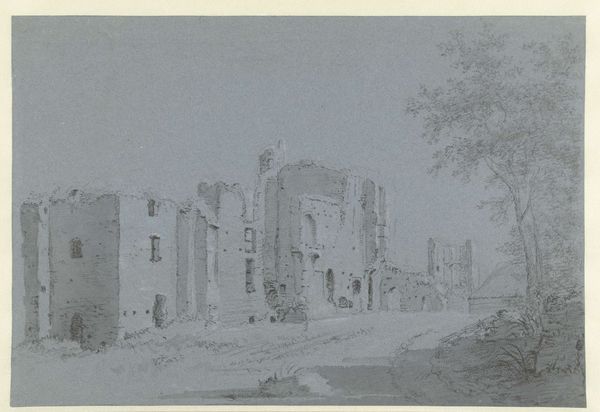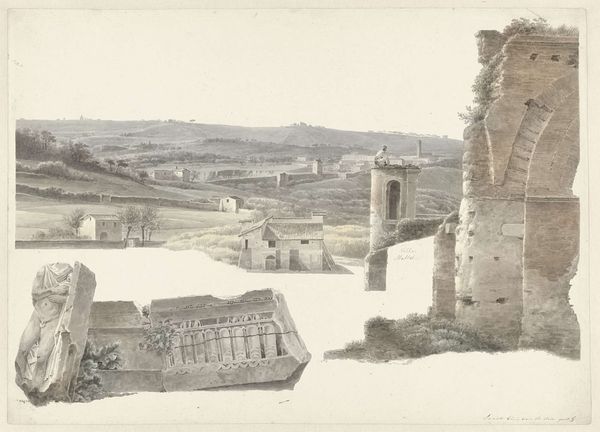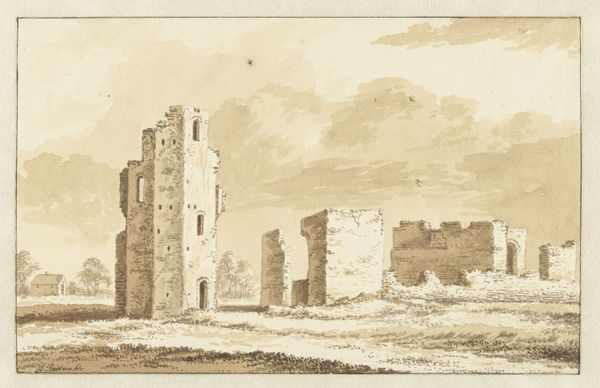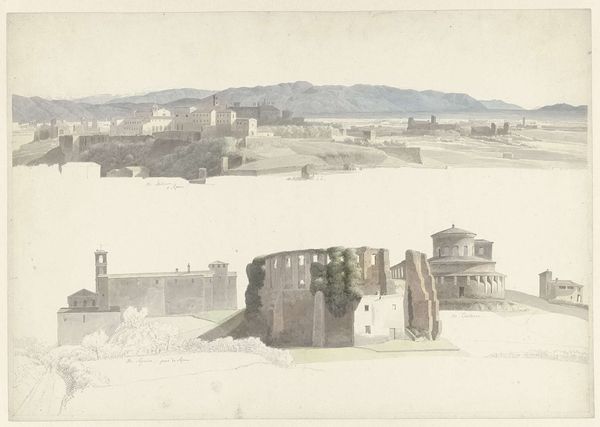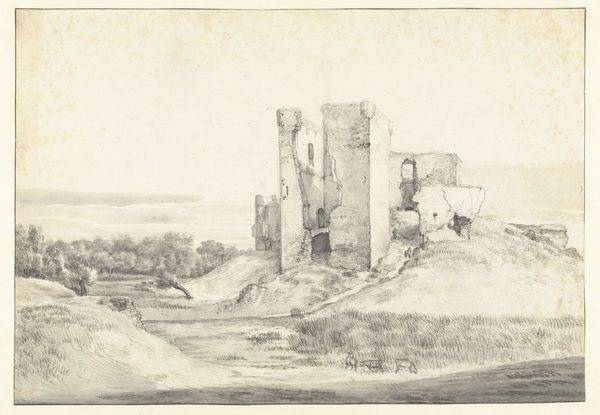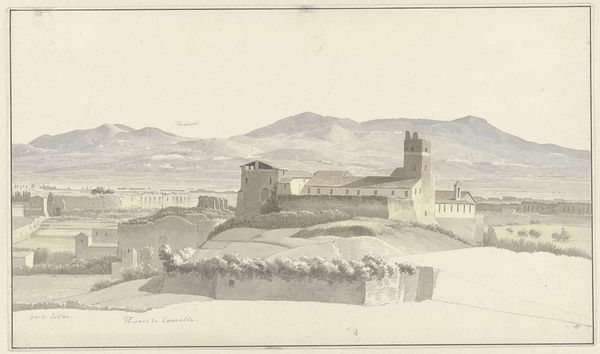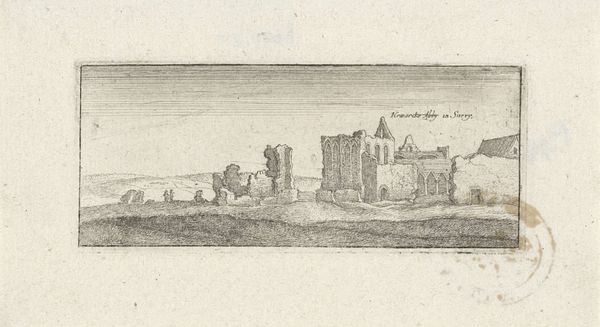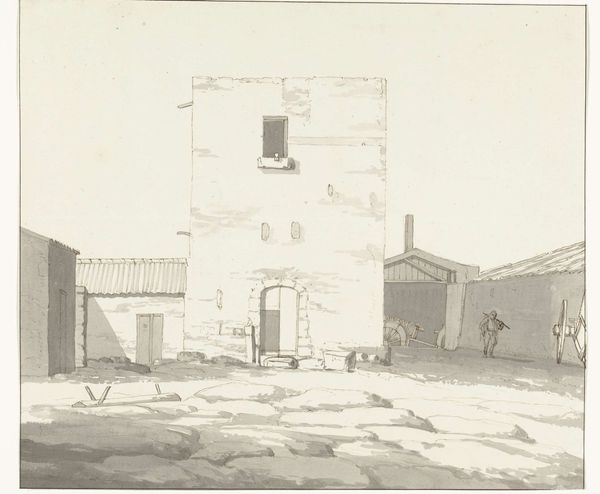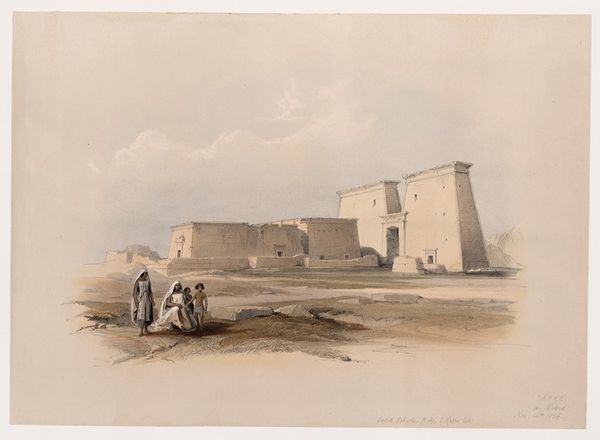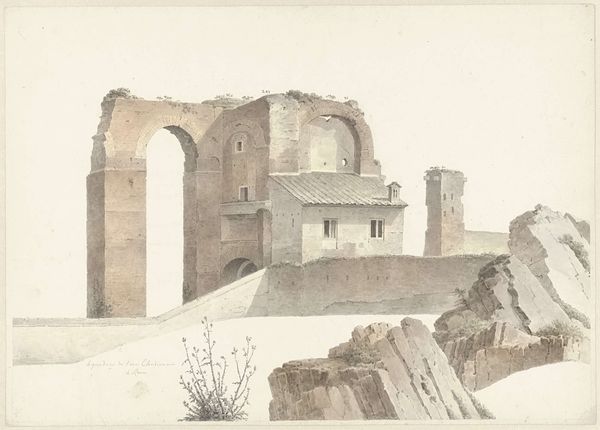
The Baths of Caracalla and Two Capitals from the Villa Mattei in Rome c. 1809 - 1812
0:00
0:00
drawing, pencil
#
drawing
#
neoclacissism
#
landscape
#
pencil
#
cityscape
#
history-painting
Dimensions: height 214 mm, width 507 mm
Copyright: Rijks Museum: Open Domain
Editor: This is Josephus Augustus Knip's drawing, "The Baths of Caracalla and Two Capitals from the Villa Mattei in Rome," created sometime between 1809 and 1812. It’s done in pencil, and the detail is amazing, especially considering the scale. There's a real sense of grandeur even in ruins. What's your interpretation? Curator: The drawing's interest for me lies in understanding Knip’s relationship to these ruins. This isn't just a landscape; it's a cityscape filtered through the lens of Neoclassicism. The materials he meticulously renders - the stone, the plaster, even the dirt – are all testaments to labor and the social structures that built, maintained, and ultimately abandoned these sites. Think about the pencil itself – how widely available was it, who produced it, and how does it democratize access to representing "high" subject matter? Editor: That’s a great point; I hadn't considered the pencil itself. I was focusing on the scale and composition— the way the buildings dwarf everything around them, suggesting power… Curator: Precisely! Power derived from material control. Rome's imperial power literally crumbles. What interests me is not just the grandeur depicted, but the conditions of its production. How did Knip experience the labour within and outside the canvas when representing the slow decay, when civilization becomes material fodder? What economic or historical currents are alluded to? Editor: I guess the choice of pencil is important then; perhaps making classical subjects more accessible, less precious. Is that a critique of traditional artistic materials? Curator: In a way. Consider the rise of industrial pencil production coinciding with growing social mobility. Knip’s drawing exists within a complex web of production and consumption, class aspirations and societal shifts, turning the classical landscape into a subtle reflection on the material world that shaped it. Editor: So, beyond just representing Roman grandeur, it’s about the tools, labor, and socioeconomic context through which this view came to be? Thanks, I’m never going to look at a pencil drawing the same way! Curator: And hopefully it will influence your art analysis in positive and interesting ways in the future!
Comments
rijksmuseum about 2 years ago
⋮
On the lower part of this drawing (now cut in half) Knip wrote ‘First sheet of the three marked Q’. Inscriptions like this are found on a number of his drawings. It was the artist’s way of indicating that two or three sheets formed a cohesive group. The drawings can sometimes be joined up to form a continuous panorama, as is the case with this view from the Villa Mattei (now Villa Celimontana) in Rome.
Join the conversation
Join millions of artists and users on Artera today and experience the ultimate creative platform.

